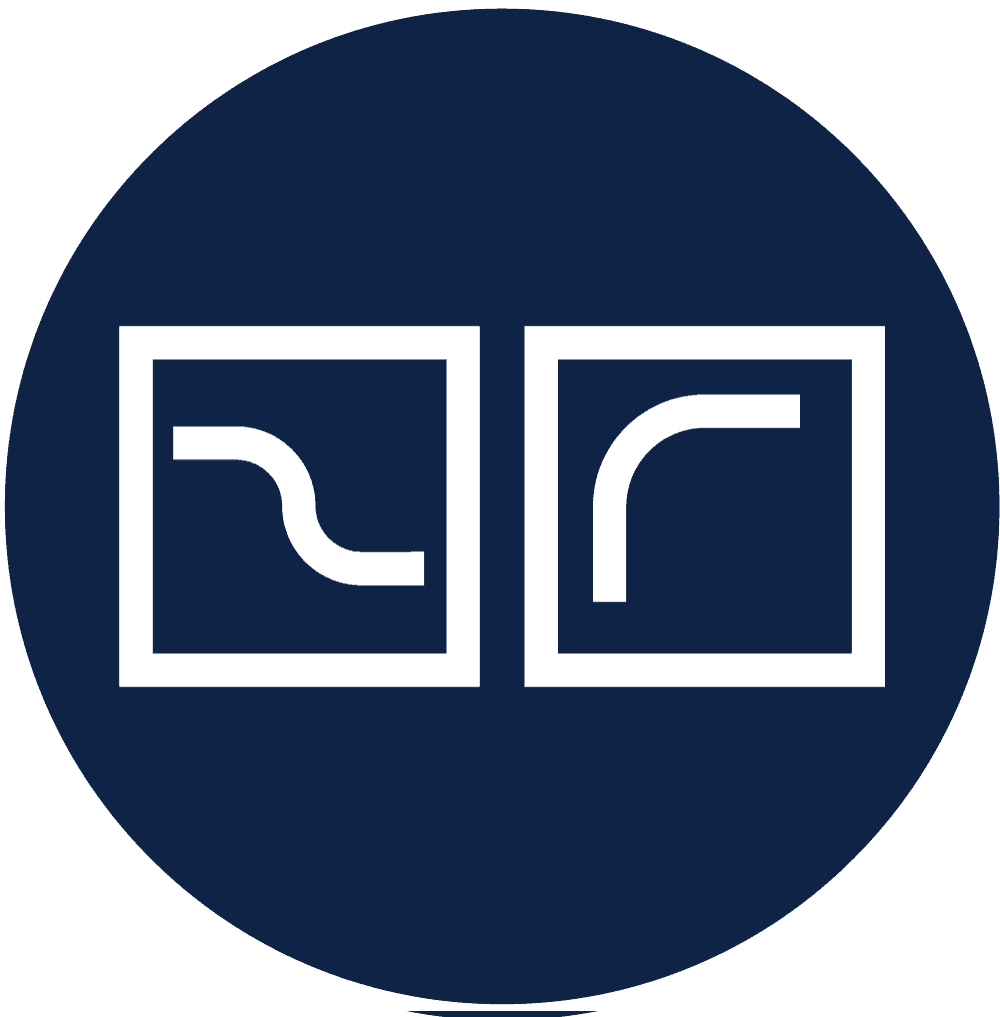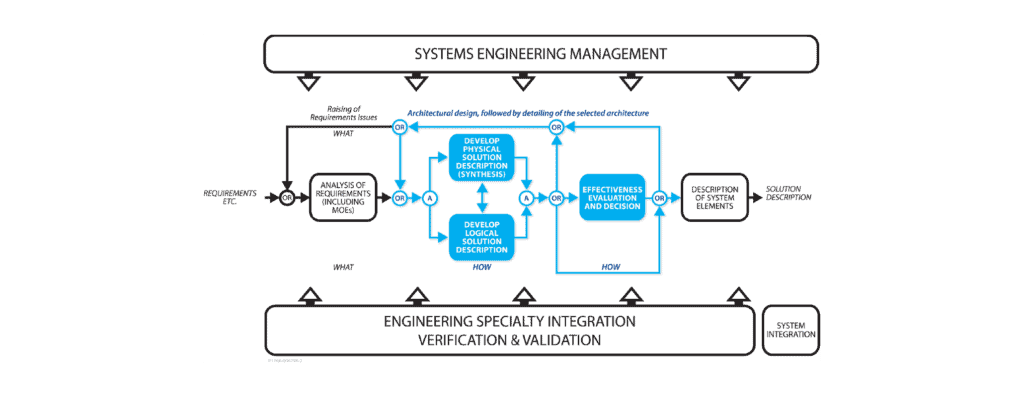Home » Training » Design Training Courses » A Systems Approach to Design
A Systems Approach to Design
Learn via this 2-day course an integrated approach to the set of design techniques incorporating MBSE that drive success regardless of technologies.
- 2 Days
- Corporate Delivery (In-person or online)
- Certificate upon completion
- Professional Development Credits
Get Started Today
Register your interest now.
Let's Talk
Whether you have a question or are looking to find out more about our training options then please get in touch with us below.
- Summary
- Course Overview
- Course Outline
 This two-day course addresses the principles and methods of designing things, regardless of what is being designed. The training provides an integrated approach to the set of technical design process disciplines. These combine with technology knowledge to contribute to the satisfaction of requirements and optimization of system effectiveness, enhancing project success and reducing risk to the enterprise.
This two-day course addresses the principles and methods of designing things, regardless of what is being designed. The training provides an integrated approach to the set of technical design process disciplines. These combine with technology knowledge to contribute to the satisfaction of requirements and optimization of system effectiveness, enhancing project success and reducing risk to the enterprise.
- This course may be credited toward the maintenance of the INCOSE Certified Systems Engineering Professional (CSEP) certification for 16 Professional Development Units and PDUs may be claimed for PMI’s family of certifications, including PMP
- This course qualifies for Engineers Australia and Engineering New Zealand (IPENZ) CPD purposes (16 hours)
- This course may qualify for CPD, CLP and similar purposes with other organizations (16 instructor hours)
- This course may be credited toward the maintenance of the Project Management Institute (PMI) certifications. Suggested PMI Talent Triangle® PDU allocation:
- Ways of Working – 16
Let’s Talk
Whether you have a question or are looking to find out more about our training options then please get in touch with us below.
Key Learning Objectives
At the conclusion of this course, participants are expected to:
- understand the overall concepts which are characteristic of a systems approach to design;
- understand the overall process elements, and their relationships, which collectively constitute the process building blocks of design (verb);
- learn a structured approach to physical design, use logical solution to help get physical design right, evaluate solution alternatives (conduct trade-off studies) and optimize design in a structured way;
- learn in overview about the disciplines of reliability engineering, safety engineering, maintainability engineering and producibility (manufacturability) engineering;
- have some basic capability to tailor the application of design principles and methods to different application scenarios; and
- be capable of extensive further learning in the field, within a sound conceptual framework.
Training Method and Materials
The course makes extensive use of workshops to put into practice the techniques covered in theory sessions.
The course is delivered using a mixture of formal presentation, informal discussion, and extensive workshops which exercise key aspects of a systems approach to design, using a single system throughout. The result is a high degree of learning, as evidenced by workshop work products, and the extensive commendations received from participants.
Participants will be provided with:
- comprehensive course materials containing presentation material and supporting reading material;
- a workbook containing workshop exercises, with worked examples also distributed;
- numerous supplementary descriptions, checklists, forms and charts which you can put to use immediately; and
- complimentary access to PPI’s evolving Systems Engineering Goldmine.
Some Key Questions
- What is architecture?
- Is architecture different to design?
- What is a systems approach to design and how is it relevant?
- What is the relevance of Waterfall development, Incremental development, Evolutionary development, Agile, Spiral development, Lean, simultaneous/concurrent engineering?
- What is the timing relationship between logical and physical design?
- What is logical design, and what forms can it take?
- Why do we care about logical design?
- What is model-based architecting? Model-based design? Are model-based and model-driven different?
- What is object-oriented design and how does it relate?
- What languages and tools are applicable for model-based work?
- Where does FMEA figure?
- Is FMECA different to FMEA?
- What about FTA and ETA, where do they figure?
- Are model-based techniques limited to certain technologies?
- How can we be sure we have come up with the best design
- Everywhere I turn there seems to be uncertainty. How can I make design decisions in the presence of such uncertainty?
- Is there a reliable and efficient way to optimize design?
- What are the skills, knowledge and attitudes (SKAs) conducive to success in being a designer?
Who Should Attend This Course?
This design course is ideal for personnel who perform or manage the development of small to large technology-based systems, products, capabilities, etc. The workshop will be of particular value to people with job titles such as:
- System Architect
- Enterprise Architect
- Design Engineer
- Systems Engineer
- Business Analyst
- Systems Analyst
- Software Systems Engineer
- Software Engineer
- Hardware Engineer
- Research Engineer
- Project Engineer
- Logistics Support Analysis Specialist
- Industrial Engineer
- R and D manager
- Engineering Manager
- Other engineering job titles.
Do you Offer Tailoring of this Course?
Yes. All courses are tailored informally verbally in delivery by selecting, where possible, examples matched to the domains of interest to the class. We can also work with you to design a formally customized curriculum for the development of your people. We have done so for many client companies, and we would love to work with you to this end. We always suggest that a client takes the corresponding standard course prior to any customization. For systems engineering, this is because systems engineering is the problem-independent and solution technology-independent principles and supporting methods for the engineering of systems, based on systems thinking. So the objectives of customization need to be very clear and focused on adding further value. In practice, customization, if performed, usually becomes the replacement of examples and possibly the main workshop system with domain-specific equivalents. Substitution of the workshop system usually involves substantial redevelopment of courseware. Out of necessity, formal tailoring of courseware is performed on a fee basis.
1. Introduction – System Design Within Systems Engineering
2. Design-Related Principles of Engineering
- Workshop 1 – design-related principles
3. Styles of System Development
- the solution domain: key concepts, relationships, and work products
- waterfall, incremental, evolutionary and spiral development approaches
- Workshop 2 – development strategies
4. Concepts of Architecture and Detailed Design – Physical and Logical
- physical architecture (structural view) – basic concepts
- logical architecture – basic concepts
- logical architecture related to physical architecture
- useful forms of logical representation – functional, state-based, mathematical, …
- model-based design in practice – MBSE/MBA/MBD/MDA/MDD
5. Initial Physical Conceptualization
- the role of technology and innovation
- techniques for stimulating innovation: brainstorming, Triz
- perspiration engineering: configuration items
- criteria for selecting configuration items
- relationship of CI definition to system integration
- Workshop 3 – physical conceptualization
6. Functional Design
- functional analysis in design – how to do it
- functional analysis/architecture process
- item flow and control flow
- coupling, cohesion, connectivity
- unallocatable and allocatable functions
- pitfalls in defining functions
- Workshop 4 – a simple functional design
- Workshop 5 – physical and functional design
- FMEA/FMECA in design
- performance thread analysis
- relationship to object orientation
- allocation of functionality between hardware and software
- Fault Tree Analysis
- Event Tree Analysis
- SysML, and alternate languages incorporating behavior modeling
- other functional modeling languages
- software tools supporting functional and physical design
- pitfalls in functional design
7. State-Based Design
- state-based design – how to do it
- Workshop 6 – part of a simple state-based design
- relationship to object orientation
- SysML, and alternative languages incorporating state-based modeling
- software tools supporting state-based design
- pitfalls in state-based design
8. Object Process Methodology (OPM)
- OPM description
- relationship to object orientation
- software tools OPM
9. Return to Physical Design
- use of design driver requirements
- facilities, procedures, people, and other types of system element
- use of a specification tree
- system elements not designated as configuration items
- some common pitfalls in developing system physical architecture
- adding the detail to the design
- design creates requirements – the duality of requirements and design
- interface engineering
- the OSI 7-Layer Model as an example in interface engineering
- relationship to system integration
- evolution of interfaces in systems having levels of structure
- interface requirements specifications versus interface design descriptions/ICDs
- some common pitfalls in interface engineering
- artefacts created in design
10. Design Decision Making and Optimization – Trade Studies
- designing for feasibility
- designing for effectiveness: approach to design optimization
- the role of MOEs and goals
- constructing a system effectiveness model
- capturing MOEs
- developing weights
- developing value functions
- Workshop 7 – building a system effectiveness model
- multiple stakeholders
- multiple uses
- some things to NEVER do
- using a system effectiveness model
- taking account of risk relating to goals
- taking account of risk relating to satisfaction of requirements
- event-based uncertainty
- risk-aversion
- Workshop 8 – using a system effectiveness model
- cost/capability, return on investment and like concepts
- iterative optimization of design – an amazingly effective methodology
- other techniques – Quality Function Deployment
- designing for the company versus designing for the customer – handling conflict of interest
- software tools supporting design decision making
- some common pitfalls in design decision making
11. Design For Six-Sigma (DFSS)
- the DFSS toolset
12. Challenges in Design Management
- estimating and managing complexity
- model-based design language challenges
- model-based design tool challenges
- design verification
13. Summary and Key Points
14. References and Recommended Reading
Featured Course Reviews

Great material and the knowledge of the presenter. The course provided very valuable information that will be put to use immediately.
Anthony

I learned a great deal about my co-workers by observing their reactions to the course material – an invaluable part of the course for me. I will also benefit from the templates and other example/reference material. Being able to use these tools or standard templates will also be highly beneficial.
Jane

Good structure in the course, supplemented by professional course material, presented by a presenter who knew what he was talking about.
Luke

Great material and the knowledge of the presenter. The course provided very valuable information that will be put to use immediately.
Kate

